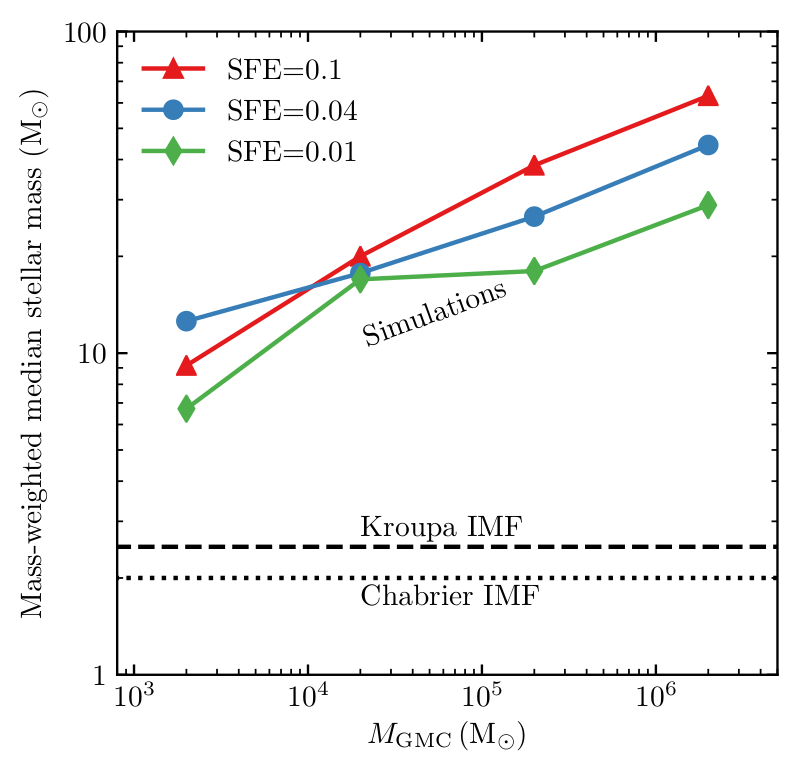| EPoS Contribution |
|
Simulating star-forming GMCs with modern meshless MHD methods
Mike Grudic CIERA, Evanston, US | |
| Meshless, Lagrangian MHD methods are well-suited to the problem of star formation, in which advection, self-gravity, angular momentum conservation, and large compressions are important. I will describe new developments in timestepping, orbital integration, and accretion algorithms designed to bring the GIZMO meshless MHD code up to the task of simulating not only the formation of stars, but their subsequent dynamics. I will then present the first results of largest resolved star formation simulations performed to date: the STARFORGE project. This initial suite simulates Milky Way GMCs up to 2×106 Msun with individually-resolved star formation, with isothermal, ideal, self-gravitating MHD. Unlike previous simulations without magnetic fields, these MHD simulations show evidence of a numerically-converged stellar mass scale. This mass scale is insenstive to the details of initial conditions such as driven vs. decaying turbulence and the initial magnetic field strength: it is a simple function of the Mach number, virial parameter, and star formation efficiency. The simulations predict stellar masses an order of magnitude too large in the Milky Way, while still producing an excess of brown dwarfs. I will thus argue that other physical mechanisms such as feedback and realistic thermodynamic processes must be setting the masses of stars in our Galaxy. | |
 | |
| Caption: Mass-weighted median stellar mass predicted by MHD simulations of star-forming GMCs, as a function GMC mass at different star star formation efficiencies. Across the whole observed range of GMC masses and efficiencies, the simulations over-predict the mass scale of stars compared to standard IMFs by more than an order of magnitude. | |
| Collaborators: D. Guszejnov, UT Austin, US S. Offner, UT Austin, US P. Hopkins, Caltech, US |
Key publication
Suggested Session: Turbulence |

